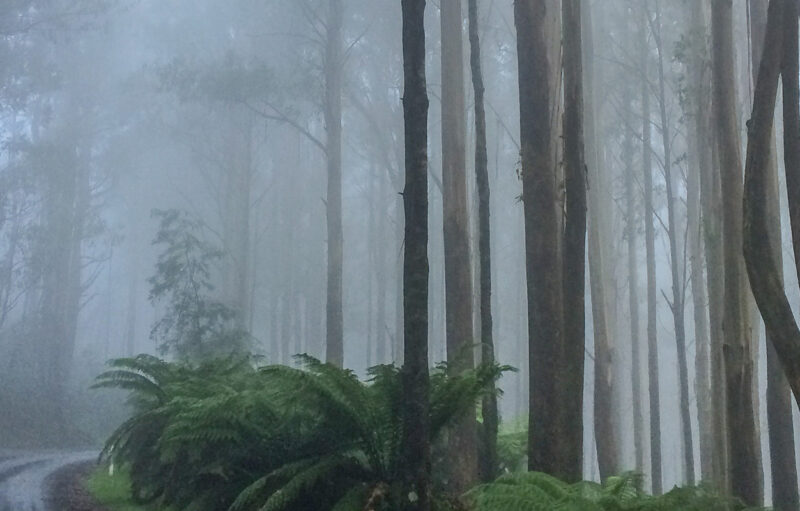PARK WATCH Article March 2024 |
Ben Gill, Nature Conservation campaigner, investigates community forestry and forest produce licences
The State Government’s 2023 decision to end native forest logging focused very heavily on the east of the state, leaving unanswered questions about the future of other types of logging, especially so-called ‘community forestry’.
Community forestry operated across the west and north of the state, and in a small part of the east. It included 124 coupes covering approximately 65,000 hectares; an area bigger than Wilsons Prom. Since 2017, we’d seen a 52 per cent increase in logging areas, largely run with the support of government grants. Logging methods vary from clearfell at Mt Cole, storm salvage at Wombat and Cobaw Forest, logging of Murray River Red Gums and other fragments of forest in the west.
VNPA, together with Wombat Forestcare and other groups, highlighted this inconsistency and called for commercial forestry to end across the whole state.
On 25 January 2024, VicForests announced that it:
…cannot continue because of the risk of litigation and the cost it would burden the taxpayer with. The Court is also likely to require a disproportionate survey effort before any operations can occur. VicForests does not consider that it has the capacity to provide coupes to Licensees and to manage Community Forestry operations.
Accordingly, VicForests cancelled all Community Forestry program operations. They finally ceased on 5 February 2024.
In 2023, Wombat Forestcare began legal proceedings against VicForests operations in the future Wombat-Lerderderg National Park. This court case was the catalyst for bringing forward the date of the exit from native forest logging. While the case influenced this decision, it is still ongoing.
So, is that the end of it? Unfortunately, not necessarily.
The underlying capacity to issue ‘forest produce licences’ still exists. This was how native forest was managed in the 1980s and 90s and we will need significant reform to remove the capacity to return to business-as-usual logging.
What is community forestry?
Advocates of community forestry still circulate. It is a woolly term, which sounds nicer than ‘industrial forestry’ but has fewer negative connotations. We had a look at some of the global literature, and the picture it paints is not that rosy.
While community forestry is marketed as having the potential to empower local communities and promote sustainable land management, there have been many international examples where initiatives have fallen far short of their intended goals or resulted in negative outcomes.
Community forestry, adaptive silviculture, regenerative forestry, urban forestry, sustainable forestry. These are all synonyms for forestry of different scales. All have faced criticism for prioritising timber extraction above looking after nature, leading to conflicts between conservationists, industry stakeholders and Indigenous communities. Some of the key points raised in the international literature include the following points.
The illusion of empowerment
Community forestry promises to empower local communities and Indigenous peoples in decision-making processes related to forest management. In reality, communities often find themselves marginalised and disempowered, as corporate and vested interests eclipse local voices.
Conflict over conservation
At the heart of the debate surrounding community forestry lies a fundamental conflict between conservation and exploitation. While proponents argue that community involvement can lead to more sustainable land management practices, the evidence is scarce to support this.
Any form of forestry in ecologically sensitive areas compromises the integrity of our natural environment.
Greenwashing and corporate capture
In the realm of community forestry, greenwashing is a pervasive phenomenon. Forestry companies across the globe seek to present themselves as environmentally responsible while exploiting natural resources for profit.
By co-opting community partnerships and sustainability certifications, these companies obscure the true impacts of their activities and perpetuate a cycle of degradation of the natural world.
Cultural heritage at risk
For First Nations people, the negative impacts of community forestry extend beyond environmental degradation to the erosion of cultural heritage and traditional knowledge.
Sacred sites, ancestral lands and cultural practices are threatened by the relentless pursuit of profit, leaving Indigenous communities dispossessed and disempowered. The loss of connection to country and culture represents a profound tragedy, one that calls into question the very foundation of our society’s relationship with the land.
Keeping a close eye on the loopholes
While the expedited timeline for the end of native forest logging is cause for celebration, there are several important mechanisms that may still enable damaging loopholes.
We must keep a very close eye on these to minimise any perverse outcomes for our forests’ future.
- Read the latest full edition of Park Watch magazine
- Subscribe to keep up-to-date about this and other nature issues in Victoria
- Become a member to receive Park Watch magazine in print
